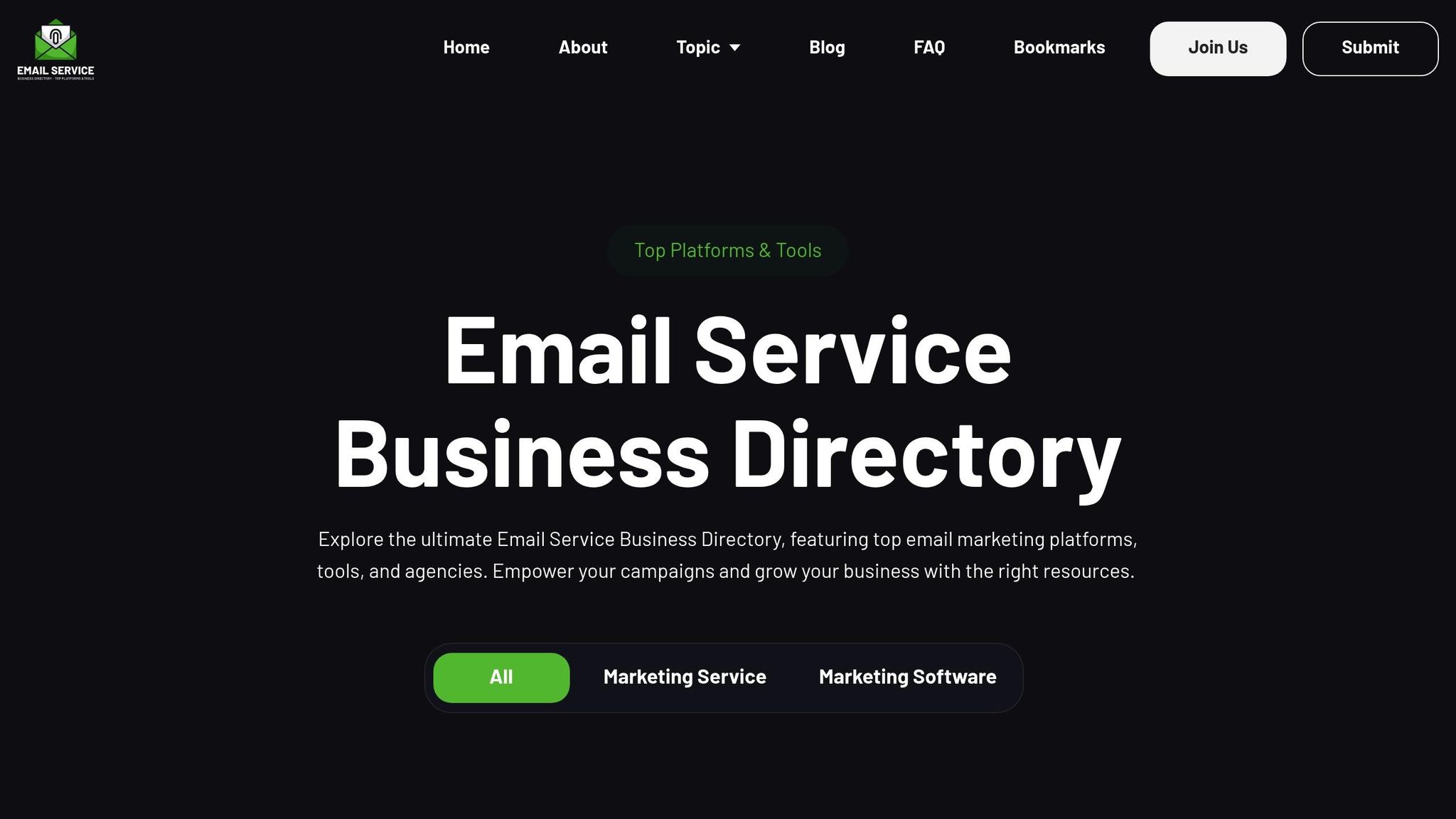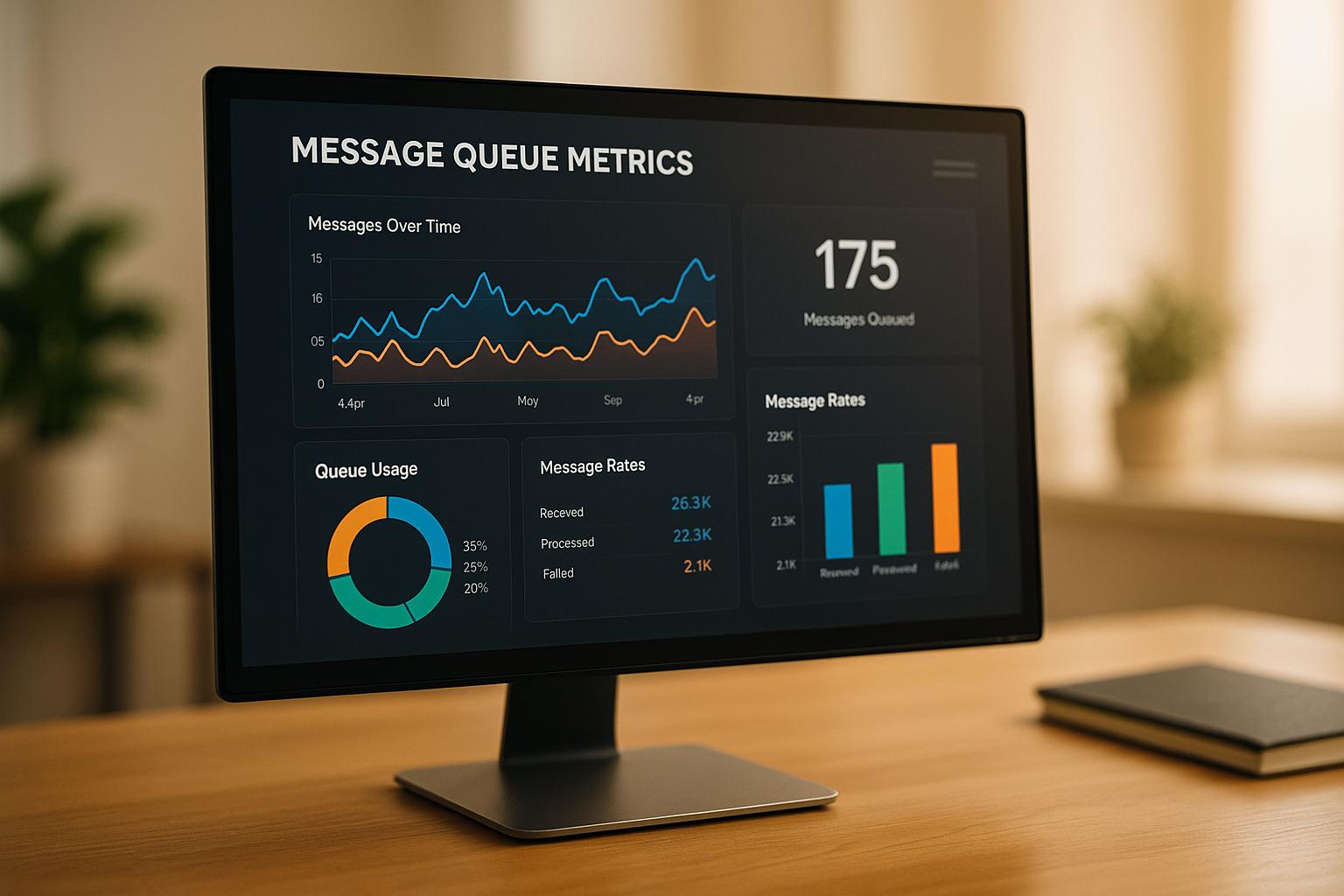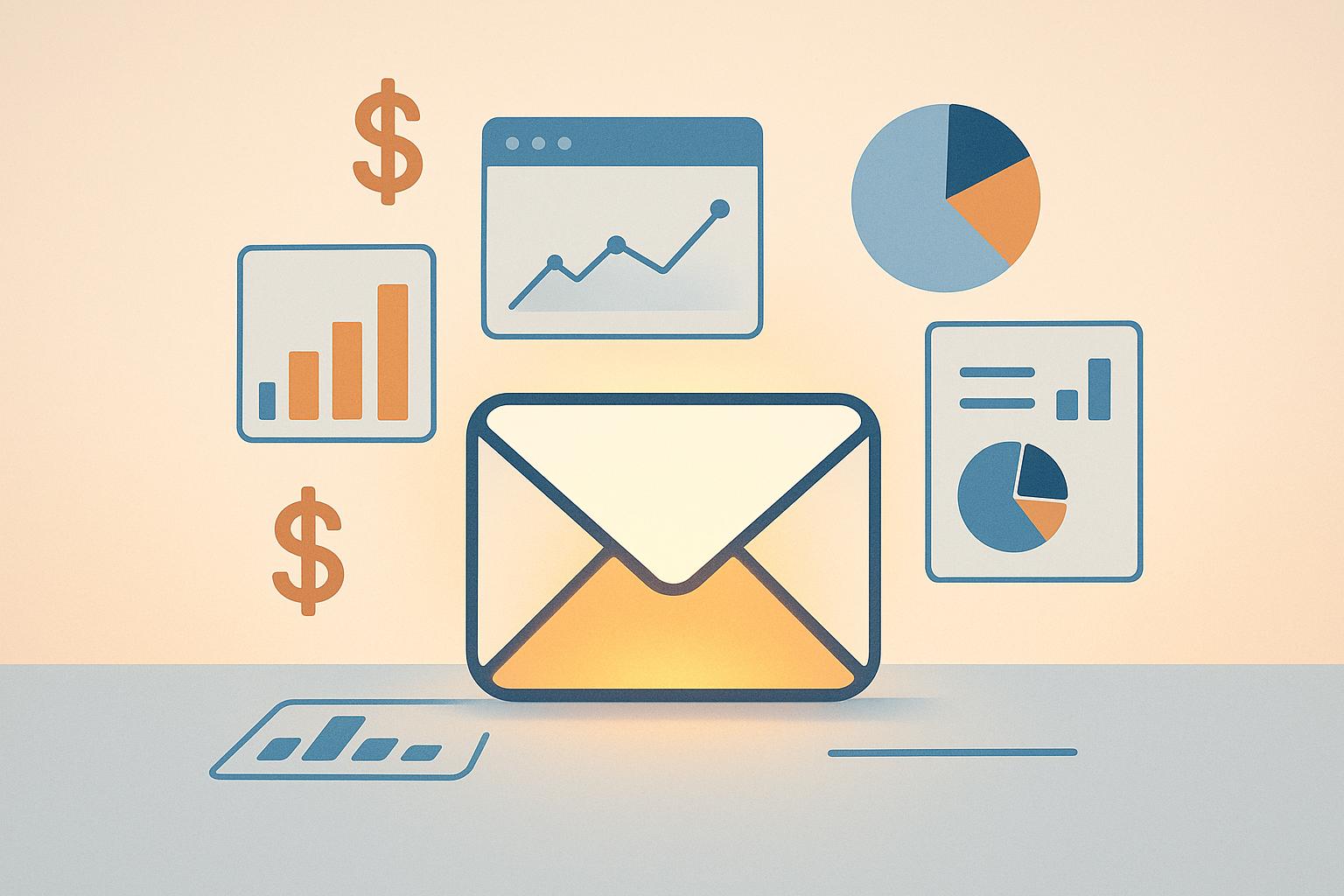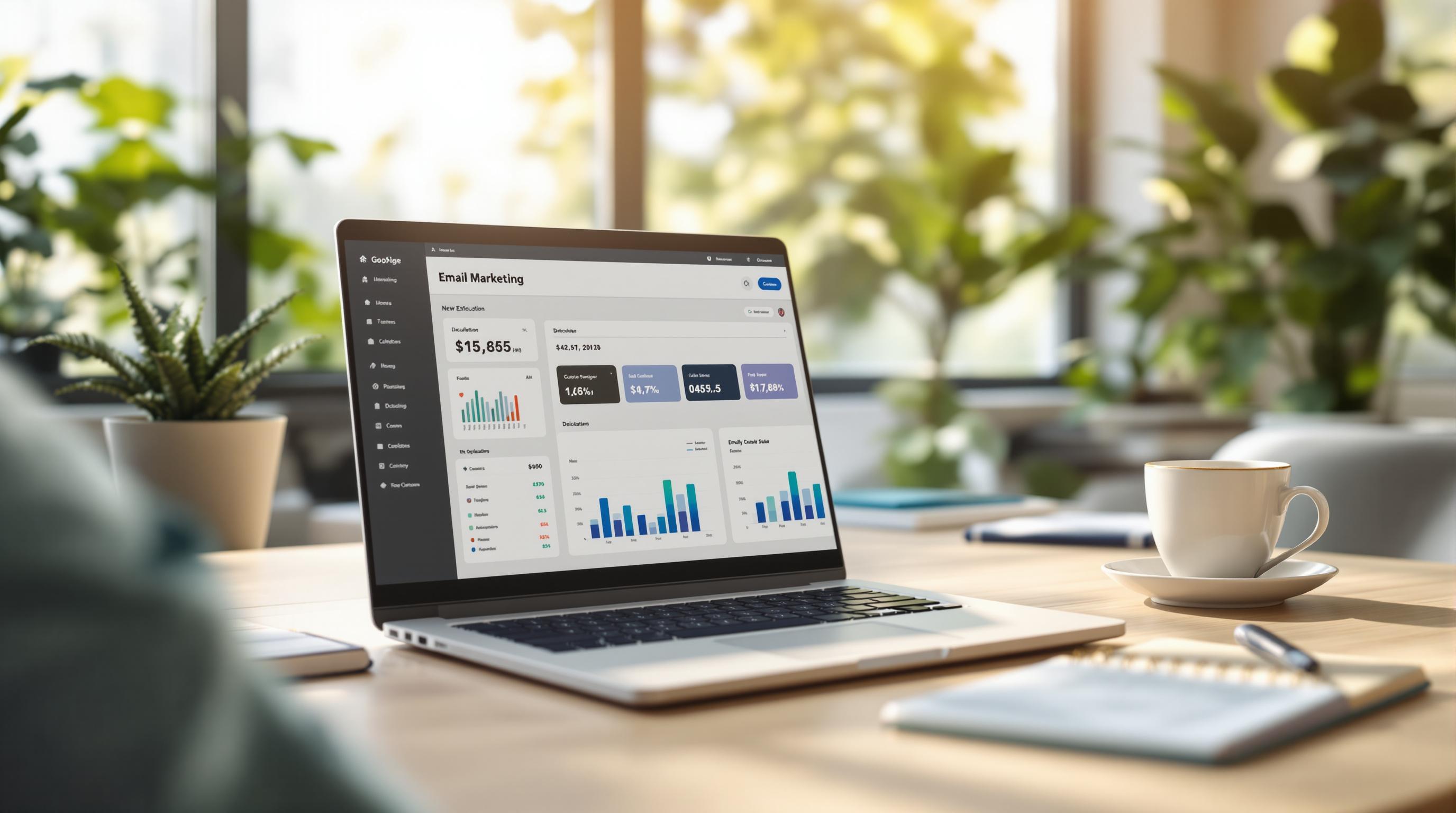Black Friday email campaigns are powerful tools for driving sales - but B2B and B2C strategies differ significantly. Here's a quick breakdown:
- B2B campaigns focus on building trust, showcasing ROI, and nurturing long-term relationships. Emails are professional, detailed, and emphasize value-added offers like flexible payment options or service upgrades.
- B2C campaigns prioritize urgency and emotion, using discounts, bold visuals, and quick calls-to-action to encourage impulse purchases.
Key differences:
- Audience behavior: B2C shoppers act quickly on emotional triggers, while B2B buyers require detailed information and involve multiple decision-makers.
- Goals: B2C aims for immediate sales; B2B seeks to generate high-value leads and long-term ROI.
- Timing: B2C campaigns ramp up frequency closer to Black Friday, while B2B requires more lead time due to longer sales cycles.
- Metrics: B2C tracks conversions and click-through rates; B2B prioritizes lead quality and lifetime value.
Both approaches rely on personalization, mobile optimization, and clean email lists to stand out in crowded inboxes. Choosing the right tools and tailoring strategies to your audience is key to success.
BFCM 2024 Email Marketing - Everything You NEED to Know
B2B vs. B2C Audiences: Different Goals for Email Campaigns
Understanding your audience is the key to a successful Black Friday email campaign. B2B and B2C buyers live in entirely different worlds, and their goals for email campaigns reflect these differences. For example, while a B2C shopper might spontaneously buy a $50 gadget during their lunch break, B2B buyers are carefully evaluating software solutions worth thousands of dollars - decisions that could impact entire teams.
The stakes are undeniably higher in B2B, but so are the rewards. B2B transactions often involve larger quantities and higher price tags, making every conversion far more impactful. However, the decision-making process is more intricate, requiring input from multiple stakeholders and taking significantly longer.
This complexity has led B2B companies to rethink their email strategies. Today’s B2B buyers, especially millennials, are demanding more consumer-like experiences. In fact, 74% of millennial business customers are willing to switch providers if their expectations aren’t met. The challenge is clear: B2B buyers want the ease and convenience of B2C interactions while still requiring the depth and relationship-building that B2B decisions demand. Let’s dive into how the goals of B2B and B2C campaigns differ.
B2B Email Campaign Goals
B2B email campaigns are all about building trust and nurturing long-term relationships. These campaigns often include in-depth content like case studies, financial breakdowns, and detailed insights to help stakeholders understand the value of a product or service . The focus is on demonstrating ROI and addressing practical concerns.
The content in B2B emails reflects the complexity of the decision-making process. It’s typically detailed, technical, and tailored to a professional audience. White papers, product comparisons, and other informational assets are common inclusions. The design is usually understated and professional, prioritizing credibility over flashy visuals.
Rather than relying on discounts, B2B campaigns aim to eliminate barriers to purchase. This could mean emphasizing added value, flexible payment options, or upgrades. For example, offering Buy Now, Pay Later (BNPL) solutions has become increasingly popular, as modern B2B buyers expect these conveniences.
Ultimately, B2B campaigns aim to establish authority, build trust, and highlight tangible benefits like cost savings, efficiency, and productivity. By addressing these rational factors, while maintaining a focus on relationships, B2B email strategies drive higher lifetime value.
B2C Email Campaign Goals
In contrast, B2C email campaigns are all about immediacy and emotion. The primary goal? Drive quick sales while creating a connection with the consumer. These campaigns thrive on impulse purchases and time-sensitive offers.
Creating urgency is a cornerstone of B2C strategies. Emails use bold discounts and limited-time deals to encourage fast decisions. Since B2C purchases are often emotionally driven, campaigns focus on elements like social proof, brand identity, and storytelling.
The content strategy for B2C emails is much simpler and consumer-friendly. These emails rely on eye-catching visuals and clear calls-to-action to grab attention - critical when the average attention span is just three seconds. The design prioritizes aesthetics, using bold graphics and engaging layouts to stand out.
Personalization plays a huge role in B2C success. Techniques like product recommendations and retargeting help brands connect with customers on a deeper level. The goal is to not only secure a sale but also leave a lasting impression.
Mobile optimization is another must for B2C campaigns. With 51.1% of Black Friday purchases in 2023 made on smartphones, emails need to deliver seamless mobile experiences. That means fast-loading images, easy-to-click buttons, and streamlined checkouts.
The financial dynamics in B2C are also distinct. While individual transactions are smaller, the higher frequency and volume of purchases make up for it. However, B2C relationships tend to be shorter, with lower lifetime value compared to B2B. This makes every campaign moment crucial for driving immediate revenue.
Payment trends are also shaping B2C strategies. Adobe Digital Insights reported a 78% increase in BNPL usage on Black Friday, and companies like Billie saw a 60% spike in BNPL transactions compared to regular Fridays. These shifts highlight how B2C campaigns need to adapt to evolving payment preferences to stay competitive. Up next, we’ll explore the tactical approaches that drive these outcomes.
Black Friday Email Campaign Strategies: B2B vs. B2C Approaches
Black Friday email strategies for B2B and B2C audiences share the ultimate goal of driving sales, but the way they get there couldn’t be more different. B2B campaigns must navigate longer sales cycles and involve multiple decision-makers, while B2C campaigns focus on grabbing attention quickly and encouraging immediate purchases.
These differences go beyond just the messaging. They influence how emails are personalized, when they’re sent, and even how the calls-to-action (CTAs) are designed. Getting these details right can make the difference between a campaign that clicks with your audience and one that falls flat.
How to Personalize Content for B2B vs. B2C
Personalization works wonders for email campaigns, but the way it’s done depends heavily on the audience. Personalized emails are no joke - they can deliver 6x higher transaction rates, boost click-through rates by 14%, increase conversions by 10%, and improve open rates by 26%. But to achieve these results, you need to tailor your approach.
B2B personalization is all about relevance and depth. These emails should deliver value by addressing specific industry challenges or business goals. Think about including detailed reports, research, or tailored pricing packages. Since decisions often involve multiple stakeholders, the content should demonstrate expertise and offer solutions that align with the recipient's business objectives. Companies often use data from account management tools or customer interactions to create messages that hit the right notes.
On the flip side, B2C personalization is designed to spark instant engagement. This means offering personalized product recommendations, exclusive discounts, or loyalty perks. The goal? Immediate action and repeat purchases. B2C brands rely on data from browsing habits, social media activity, and customer feedback to create real-time, adaptive messages that match shopping behaviors and preferences.
The relationship dynamics also vary. B2B is about building trust through expert advice and tailored solutions, while B2C focuses on creating a strong emotional connection and brand loyalty.
Once you’ve nailed personalization, timing becomes the next big piece of the puzzle.
Email Timing and Frequency Differences
When it comes to Black Friday campaigns, timing is everything. The right schedule can make or break your open and conversion rates. For example, emails sent between 6 AM and 8 AM on Black Friday see a 14% higher open rate, while those sent between 4 PM and 6 PM have a 10% higher conversion rate.
B2B timing strategies revolve around work hours. Emails sent during weekdays - especially Tuesday, Wednesday, and Thursday - between 5 AM and 7 AM tend to perform best. B2B audiences are more likely to check emails during their workday and prefer fewer, high-quality messages.
For B2C audiences, timing follows a different rhythm. Emails sent in the morning, particularly between 9 AM and 12 PM, often perform well. Weekends are also great for B2C campaigns since consumers have more free time. To tap into the urgency of Black Friday, B2C brands often start their email sequences early - sometimes as early as October - and increase the frequency as the big day approaches. This makes sense, considering 48% of shoppers begin researching Black Friday deals weeks in advance, and 65% aim to finish most of their holiday shopping during Thanksgiving weekend.
Call-to-Action Design: B2B vs. B2C Focus
Once you’ve grabbed your audience’s attention, your call-to-action (CTA) is what turns interest into action. But just like with personalization and timing, the approach differs for B2B and B2C.
B2B CTAs are designed to guide prospects through a thoughtful decision-making process. Instead of pushing for an immediate purchase, they encourage actions like "Download Case Study", "Schedule Demo", or "Request Quote." These CTAs often highlight financial benefits, offering phrases like "Calculate Your ROI" or "See Cost Savings" to appeal to the logical side of decision-makers. The tone is professional and data-driven, reflecting the longer sales cycle.
B2C CTAs, on the other hand, are all about creating urgency and excitement. Phrases like "Shop Now", "Get 50% Off", or "Limited Time Only" are common. As HubSpot explains:
"B2C customers are highly invested in their own enjoyment when buying for themselves rather than a business they work for. Sure, everyone wants products that make their lives easier, but the average B2C audience is far more interested in fun than the average B2B audience."
To match this mindset, B2C CTAs often use bold colors, large buttons, and action-oriented language to spark emotional responses and drive immediate action.
sbb-itb-6e7333f
How to Measure Black Friday Email Campaign Success
Success isn’t just about the revenue your campaign generates. It’s also about identifying and tracking the metrics that drive meaningful improvement. As Peter Drucker famously said, "If you can't measure it, you can't improve it."
Black Friday, with its crowded inboxes and intense competition, demands a well-thought-out measurement strategy to identify what’s working and what isn’t.
Key Metrics for B2B and B2C Campaign Performance
When it comes to tracking the success of email campaigns, B2B and B2C marketers have distinct priorities. While the average email open rate across industries sits at 21.33%, and a healthy click-through rate (CTR) hovers around 15%, these numbers are just benchmarks. The real insights come from digging into metrics that align with your specific goals.
B2B campaigns tend to focus on metrics that measure long-term engagement and the quality of leads rather than quick wins. These campaigns often involve a longer sales cycle, with decisions made by multiple stakeholders after thorough research. For B2B marketers, the most valuable metrics include lead quality, customer lifetime value, and overall ROI.
On the other hand, B2C campaigns are designed for speed. Their goal is to drive immediate action - whether that’s clicking, converting, or making a purchase. Metrics like conversion rates and CTRs are critical here, especially since 38% of American consumers say emails influence their buying decisions. With mobile shopping on the rise, it’s no surprise that 51.1% of purchases during Black Friday 2023 were made on smartphones.
| Metric | B2B Focus | B2C Focus |
|---|---|---|
| Primary Goal | Lead quality and long-term ROI | Quick sales and conversions |
| Key Metrics | Lead generation, customer lifetime value, ROI | Conversion rate, click-through rate, immediate sales |
| Timeline | Weeks to months for conversions | Hours to days for conversions |
| Data Segmentation | Job title, company size, industry | Demographics, purchase behavior |
Segmentation strategies also differ between the two. B2B campaigns often segment audiences by job title, company size, and industry, while B2C campaigns rely on demographic and behavioral data to target their audiences effectively.
Common Black Friday Email Campaign Challenges
Black Friday comes with its own set of challenges that can skew your campaign’s performance metrics. One of the biggest hurdles is email fatigue - when inboxes are flooded with promotional emails, even the most well-crafted messages can go unnoticed.
Deliverability is another issue. During peak shopping seasons, email servers are overwhelmed, and spam filters become more aggressive, making it harder for your emails to reach their intended audience. To combat this, it’s essential to keep your email lists clean by removing bounced, inactive, or invalid addresses.
B2B marketers face additional obstacles, such as higher advertising costs and longer sales cycles during Black Friday. Despite these challenges, 57% of B2B companies that participated in Black Friday promotions saw significant sales growth. Meanwhile, B2C marketers often struggle to stand out in overcrowded inboxes, where even the best discounts can get lost in the noise.
Attribution tracking adds another layer of complexity. A customer might open an email, visit your website, and then see a social media ad before making a purchase. Without advanced tracking systems, it’s tough to pinpoint which touchpoints contributed most to the conversion. This highlights the need for precise measurement strategies across all campaign elements.
Improving email deliverability is a critical first step. This can be achieved by maintaining clean email lists, reducing bounce rates with relevant content, and avoiding spam-like messaging to minimize unsubscribe rates. As Think with Google points out, "95% of leading marketers agree that 'to truly matter,' marketing analytics KPIs must be tied to broader business goals."
Finally, don’t underestimate the power of testing. Companies that A/B test every email see returns that are 37% higher than those that don’t. Even small improvements in open or click-through rates can have a big impact on your bottom line.
Black Friday Email Campaign Best Practices
Black Friday email campaigns are a cornerstone of holiday marketing, with 77% of email marketers reporting strong returns from these efforts. Notably, 84% of marketers send at least two emails per week during this period, and 56.9% of consumers start looking for holiday promotions as early as a month before Black Friday. These campaigns thrive on precise timing and personalization, ensuring every email serves a clear purpose.
B2B Campaign Best Practices
B2B Black Friday campaigns take a different path compared to their B2C counterparts. While retail often leans on massive discounts, B2B buyers are more likely to engage with offers that deliver added value, such as service upgrades or exclusive perks, rather than straightforward price cuts.
"Millennials brought their consumer habits into the B2B world and expect a swift, purpose-driven customer journey." – Facebook
To make your B2B campaign effective, segment your audience by factors like job title, company size, and industry. This ensures your message is directed at the right decision-makers. Use tailored content to address specific business challenges, and keep your email design clean and professional to guide recipients through a logical decision-making process.
B2C Campaign Best Practices
B2C email campaigns thrive on creating urgency and tapping into emotions. Strategies like countdown timers, low-stock alerts, and limited-time offers work wonders in driving conversions. Personalization is also a game-changer: use dynamic content to recommend products based on browsing history and previous purchases. Additionally, zero-party data - information willingly shared by customers - can help craft more personal and thoughtful gift suggestions.
Data-driven campaigns consistently outperform generic approaches. For example, some brands have seen a 49% year-over-year revenue increase and an 8x boost in attributed revenue by leveraging segmentation and personalization. Segmenting your email list based on purchase history, browsing behavior, and engagement levels ensures your offers are targeted and relevant, avoiding the pitfalls of generic mass emails.
"The one thing I never recommend is blasting folks you haven't spoken to in years over BFCM. BFCM does present some opportunity to win back more recently churned customers, but I'd still recommend keeping your segments tight so that you don't end up in a deliverability ditch." – Loretta Doria, director of strategy, Ragnarok
Using Email Service Business Directory for Campaign Success

Choosing the right email platform can significantly enhance your Black Friday campaign results. The Email Service Business Directory is a helpful resource for finding platforms that offer automation, analytics, and deliverability tools crucial for managing high-volume holiday campaigns.
For B2B campaigns, prioritize platforms with features like lead scoring, CRM integration, and detailed analytics to accommodate the longer sales cycles typical in this space.
B2C marketers, on the other hand, should look for platforms with mobile-friendly designs, dynamic content blocks for personalization, and robust automation for tasks like abandoned cart recovery and post-purchase follow-ups. Both B2B and B2C campaigns benefit from platforms with a strong focus on deliverability, ensuring your messages reach inboxes during the Black Friday rush.
To further improve engagement, experiment with split-testing subject lines and use dynamic content to personalize emails. Keep your email designs consistent with your brand identity:
"You might have a holiday-specific aesthetic, which is fine, but most brands are likely to be sending a higher volume of content than at other times of the year, so you should keep to a simplified structure on each message. Not every email should carry design that in and of itself has been built from the ground up. Decide on one primary aesthetic and iterate off it." – Ben Zettler, founder of Zettler Digital
Leverage the directory's comparison tools to find a platform that aligns with your campaign goals, whether that's handling large email volumes, enabling advanced personalization, or integrating seamlessly with your existing marketing tools. A well-chosen platform can make all the difference in your Black Friday email strategy.
Conclusion: Main Differences Between B2B and B2C Black Friday Campaigns
B2B and B2C Black Friday email campaigns take distinct paths, shaped by differences in audience behavior and business goals. B2C campaigns focus on driving quick sales, using emotional appeals and urgency to spark immediate action. On the other hand, B2B campaigns emphasize building relationships and presenting long-term value, catering to the more calculated decision-making process of their audience.
The expectations of the audience are a key factor in this divide. B2C customers look for eye-catching visuals, instant gratification, and deals that encourage impulse buys. B2B buyers, while increasingly accustomed to consumer-like experiences, still demand logical, data-backed messaging that can justify purchases to multiple stakeholders.
Timing and success metrics also set the two apart. B2C campaigns can afford to launch closer to Black Friday, measuring success through quick-turn metrics like conversion rates and customer acquisition costs. B2B campaigns, however, require more lead time to account for longer sales cycles - often stretching beyond a month compared to B2C’s typical one- to two-week cycles. As a result, B2B marketers focus on metrics like lead quality and customer lifetime value.
When it comes to technical execution, each approach has its own hurdles. B2B campaigns face higher challenges with email deliverability, as B2B senders are nearly three times more likely to encounter list acquisition issues than their B2C counterparts (12.3% vs. 4.3%). Meanwhile, B2C campaigns must prioritize mobile optimization to cater to on-the-go shoppers.
The platform requirements further highlight the operational differences. B2B campaigns benefit from email platforms that integrate with CRM systems, offer lead scoring, and provide advanced analytics to guide complex decision-making. In contrast, B2C campaigns rely on platforms designed for automation, dynamic content, and mobile responsiveness to manage high-volume, fast-paced sales.
These distinctions underline the importance of choosing the right tools for the job. For example, the Email Service Business Directory provides comparison tools to help businesses find platforms tailored to their unique needs - whether it’s supporting B2B’s relationship-driven strategies or B2C’s conversion-focused tactics. With the right platform, marketers can align their campaigns with their goals, budgets, and technical demands.
Recognizing these differences is crucial for marketers to avoid applying B2C tactics to B2B campaigns and vice versa. Success lies in tailoring strategies to fit the specific needs of each audience and campaign type.
FAQs
How can B2B companies add a consumer-friendly touch to their Black Friday email campaigns without losing their professional tone?
B2B companies can make their Black Friday email campaigns more engaging by combining a professional tone with elements that appeal to consumers. Start by customizing your content to address the unique needs of each client. Include attention-grabbing visuals like banners or product images to draw the eye. Adding features like countdown timers or highlighting limited-time deals can create a sense of urgency while keeping the tone polished and business-focused.
To maintain professionalism, emphasize clear value propositions that matter to business clients. This could mean showcasing exclusive discounts, sharing case studies, or focusing on ROI-driven benefits that speak directly to decision-makers. By blending a consumer-friendly design with a clear, professional message, your campaign can strike the perfect balance between engaging and credible.
How can B2C marketers make their Black Friday emails stand out in crowded inboxes?
To stand out during Black Friday, B2C marketers should focus on creating urgency by using FOMO-driven language like "Hurry, only 24 hours left!" This taps into the fear of missing out and encourages quick action. Personalization is another powerful tool - segment your audience to send offers that align with their preferences or past purchases. Start building excitement early with teaser emails, and follow up with timely reminders to keep your brand fresh in their minds.
Make sure your emails are optimized for mobile devices and dark mode to ensure they look great on any screen. A clear, engaging subject line paired with a strong call-to-action (CTA) can guide readers toward taking immediate steps, like clicking through to your site. Timing is everything - schedule your emails carefully to avoid being buried in the avalanche of Black Friday promotions, and aim to hit inboxes during peak shopping hours.
What should I look for in an email platform to run successful B2B and B2C Black Friday campaigns?
To create impactful Black Friday campaigns for both B2B and B2C audiences, start by selecting an email platform with strong data analytics capabilities. This will help you track customer behavior and understand their preferences. Make sure the platform also supports A/B testing, so you can fine-tune your content and improve results.
Look for tools that offer personalization and segmentation features. These allow you to craft messages that resonate with specific audience groups, making your emails more relevant and engaging. Additionally, a platform with reliable automation tools is essential for scheduling and managing email flows efficiently, especially during busy periods when timing is critical.
Before hitting send, take the time to thoroughly test your campaigns. This ensures smooth delivery and provides a seamless experience for your audience.


